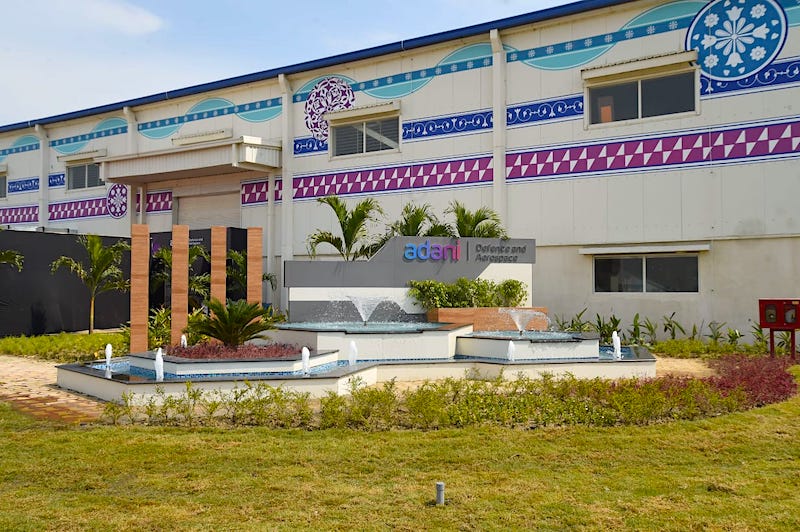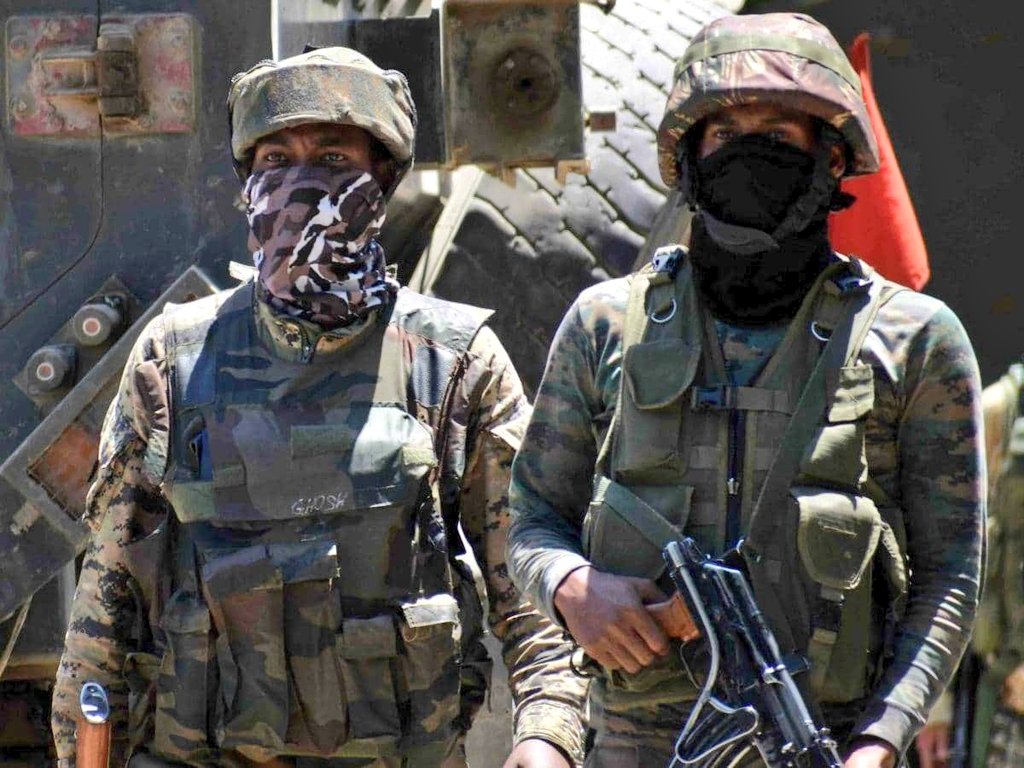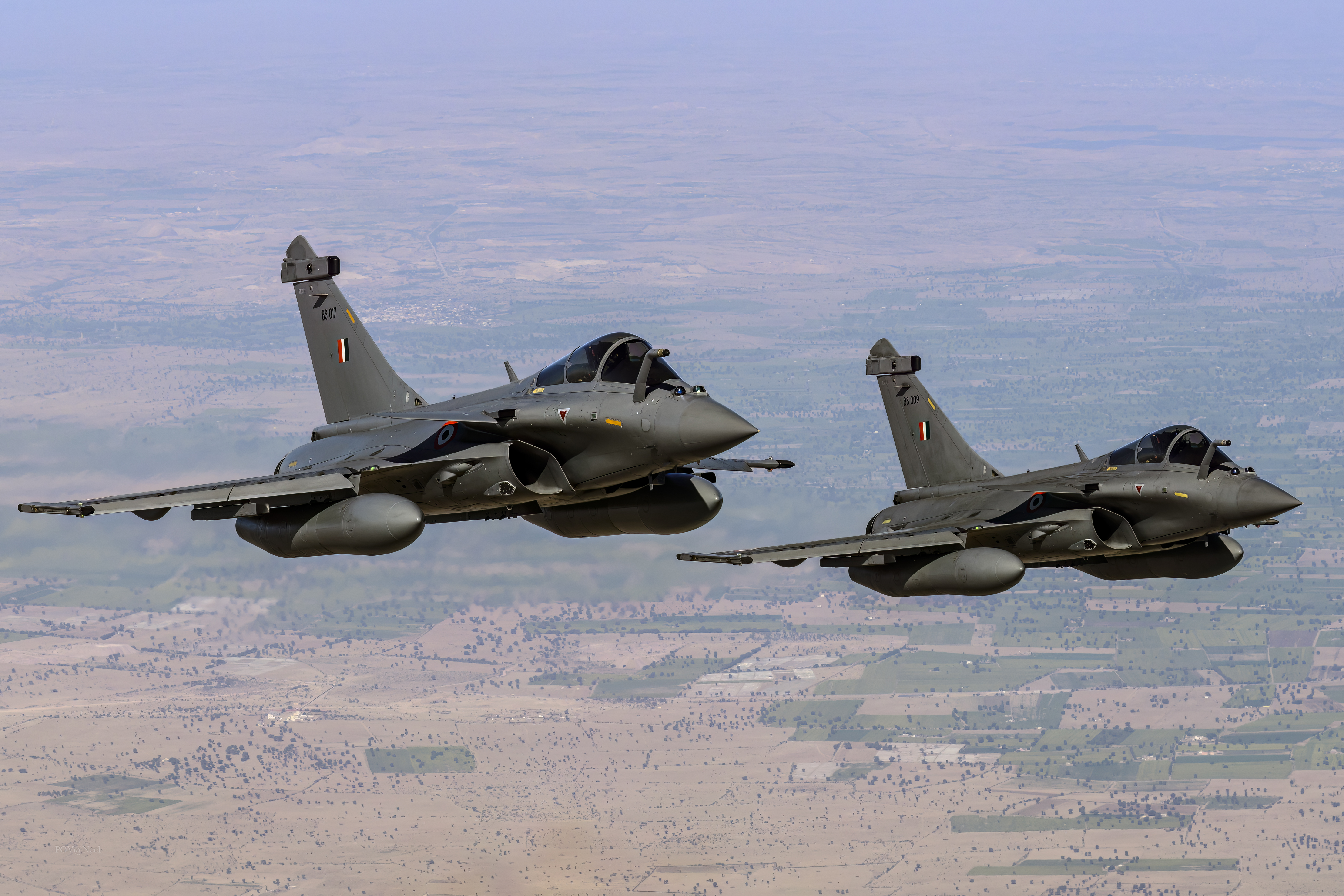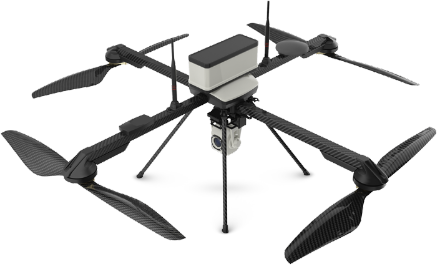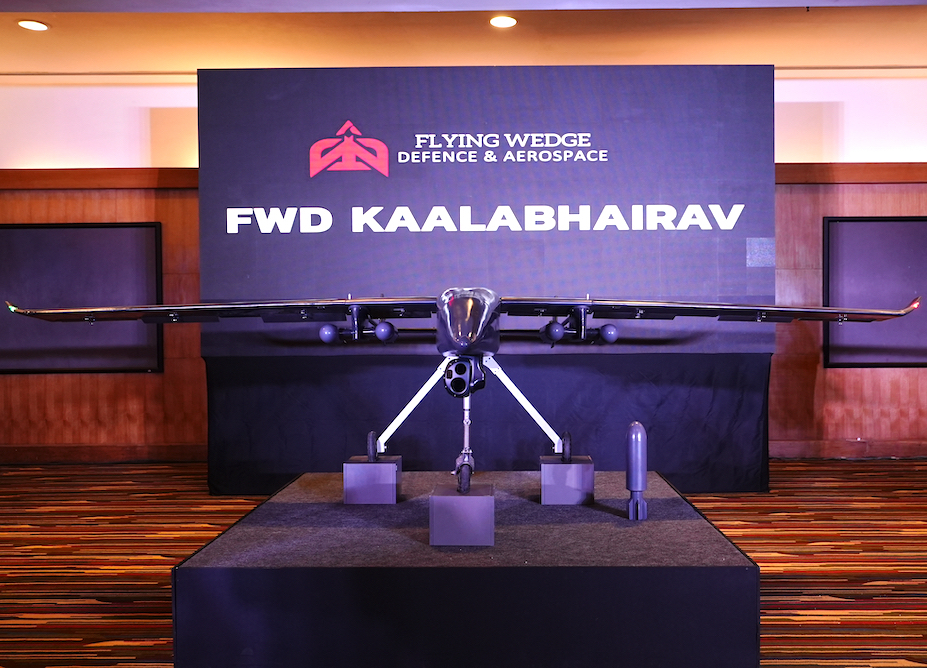 A model of the Kaalabhairav drone on display. (Photo: FDWA)
A model of the Kaalabhairav drone on display. (Photo: FDWA)
Bengaluru: Flying Wedge Defence and Aerospace, a Bengaluru-based defence startup, has announced a significant milestone in India’s push for self-reliance in military technology, unveiling what it claims is the country’s first fully indigenous medium altitude long endurance (MALE) autonomous combat aircraft.
Flying Wedge revealed on Friday that its platform, christened “Kaalabhairav” has secured an export order worth $30 million from an unnamed South Asian nation, which is seen as a potential shift in India’s defence export capabilities.
Named after the Hindu deity representing the guardian of time, the aircraft boasts an operational endurance of 30 hours and a range of 3,000 kilometres. The platform represents India’s attempt to reduce dependence on foreign military systems, particularly American Predator drones and Israeli Searcher models.
Suhas Tejaskanda, founder and chief executive of FWDA, highlighted growing concerns about India’s reliance on foreign defence systems. “For decades, India has relied on foreign systems like Predator and Israeli Searcher models, but at a high strategic cost, from embedded kill-switch vulnerabilities to critical flight data routed through external servers,” he said.
The comments come against the backdrop of evolving India-US defence relations and tightening American export controls on sensitive military technology. Tejaskanda suggested that recent geopolitical shifts necessitate a review of existing defence agreements, arguing that dependence on foreign systems could compromise India’s strategic autonomy during wartime operations.
The startup’s concerns reflect broader anxieties within India’s defence establishment about operational data potentially being accessible to overseas agencies through external networks embedded in foreign-manufactured systems.
Cost-effective alternative
FWDA claims its Kaalabhairav E2A2 (Economic & Efficient Autonomous Aircraft) delivers comparable combat capabilities to systems like the American MQ-9 Reaper at one-tenth the cost. The company asserts that ten Kaalbhairav units can match the reconnaissance capabilities of a single Predator drone while offering superior cost-effectiveness.
The economic argument extends to operational losses, with FWDA calculating that while losing a Predator could cost up to ₹1,000 crore, the same investment could deploy an entire fleet of indigenous aircraft, reducing the impact of individual unit losses on mission capabilities.
The platform incorporates swarm warfare capabilities, enabling coordinated autonomous operations designed to overwhelm enemy air defence systems through multi-angle precision strikes. This approach reflects evolving military doctrines that emphasize distributed, networked combat systems over individual high-value platforms.
The startup emphasizes complete self-reliance in manufacturing, claiming zero dependence on foreign original equipment manufacturers (OEMs). This approach aims to create a sanctions-proof supply chain with in-house development of critical technologies and components.
FWDA has established what it describes as a fully indigenous maintenance, repair, and overhaul (MRO) ecosystem, potentially offering faster turnaround times, reduced lifecycle costs, and uninterrupted access to spare parts compared to imported alternatives.
The company positions the Kaalabhairav as India’s entry into the global defence export market, suggesting a strategic shift from being among the world’s largest arms importers to becoming a technology exporter. India’s defence exports reached a record ₹21,083 crore in fiscal year 2023-24, representing a significant increase from ₹1,941 crore in 2016-17.
Market challenges
The global military drone market, valued at approximately $15 billion in 2023, has seen rapid expansion driven by conflicts in Ukraine, the Middle East, and evolving military doctrines worldwide. Countries increasingly seek domestic capabilities to reduce strategic vulnerabilities associated with foreign suppliers.
However, FWDA faces significant challenges in establishing credibility against established manufacturers like General Atomics (MQ-9 Reaper) and Israel Aerospace Industries. The company must demonstrate operational effectiveness, reliability, and compliance with international export regulations to compete in global markets.
The unnamed South Asian client represents FWDA’s first major validation, though the company has not disclosed delivery timelines or specific operational requirements. Success in this initial contract could provide crucial operational data and references for future sales.
The Defence Research and Development Organisation (DRDO) has separately been developing indigenous drone capabilities, including the Rustom series of MALE UAVs. The emergence of private sector alternatives like FWDA reflects the government’s broader push to involve domestic industry in critical defence technologies through initiatives like the Defence Production Policy 2020.
The startup’s claims await independent verification and real-world operational testing, which will ultimately determine whether indigenous alternatives can effectively challenge established foreign systems in terms of performance, reliability, and cost-effectiveness.




